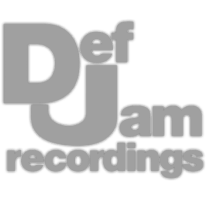Professional Analog Mastering.
Professional Analog Mastering.










Inverse EQ is a great way to add some clarity amongst similar instruments - it uses the match function on an EQ and then inverts that signal to cause further separation. The FabFilter Pro-Q 3 is the current best option for this technique, but Trackspacer can work well too.
The Best equalizer to use for inverse equalization is most likely the FabFilter Pro Q 3. I’ve tried using Izotope Ozone's Match equalizer and some others; however, they don’t seem to offer the needed functionality - comment below if you know of another one that works.
Let’s listen to the mix we’re going to be using this technique one.
When you want to use inverse EQ matching, insert the Pro-Q 3 on one of the 2 tracks you’d like to separate - then make the other track the external side chain. For example, if you want to separate your kick and bass, insert the plugin on either or.
Then make the external side chain the kick if the plugin is on the bass, and vice versa.
Now that we have the 2 tracks routed correctly, hover over the Analyzer settings at the bottom, and click EQ Match - then select your external side chain as the reference. Then push space bar or play, and the match function will begin to measure the 2 signals.
The white overlay is what the matched curve will look like. Then select match and decide on the number of bands you want to create before hitting finish.
Let’s pick the full 24 and have a quick listen to the matching - this shouldn’t sound too good since we’re not finished, but it will give you an indication of what this sounds like so far.
As we can see, some of our bands are pretty extreme, so I’ll change my scaling to 30dB in the top right, and then begin to delete bands. I’ll delete super low and high bands, as well as ones with extreme amplitudes - then I’ll highlight all of my remaining bands.
With all the bands highlighted, I’ll use the gain dial to affect all of their amplitudes, in turn inverting their amplitudes. I like to make the amplitude only a few dB.
Once our EQ curve has been inverted, we’re pretty much done; however, there are a couple of other techniques we can try. For example, if we highlight all of the bands, we can make the curves smoother or sharper with the Q value or the slope value.
If you’re using this to reduce problem frequencies, try a higher Q value and a 96dB per octave slope. Try the opposite for a more musical sound.
Another thing to consider is the phase setting we choose - with all of these bands, we’re changing the phase of the EQ’s internal filters, making the curve slightly less accurate which is problematic since it kind of defeats the purpose. To remedy this, use a low-latency linear phase setting.
Or if you want a slightly more natural sound, try the natural phase setting which emulates the phase shifts caused by analog equalizers.
One way to make inverse equalization more interesting is to make the bands dynamic - to do this, highlight the band, right-click, and select make dynamic. If you choose to use this effect, I’d move the curves closer to unity and let the dynamic aspect do the work.
Let’s listen to regular vs dynamic inverse equalization while using a low-latency linear phase setting.
Unfortunately, the Pro-Q 3 doesn’t like you match the signals on a mid and side basis - at least not in a way I’ve found without creating mid and side versions of my tracks. Regardless, we can change some of the bands to mid and side for a creative effect.
For my lows, I’ll make positive bands mid and negative bands side. For the highs, I’ll do the opposite.
If all of this seems like a headache or you simply don’t want to purchase the Pro-Q 3 - there is another option. You can use a plugin called Trackspacer by Wavefactory to perform dynamic inverse equalization, which causes a similar effect to some of the methods detailed earlier.
Just use the external side chain as we did earlier and the plugin separates the 2 in real-time.